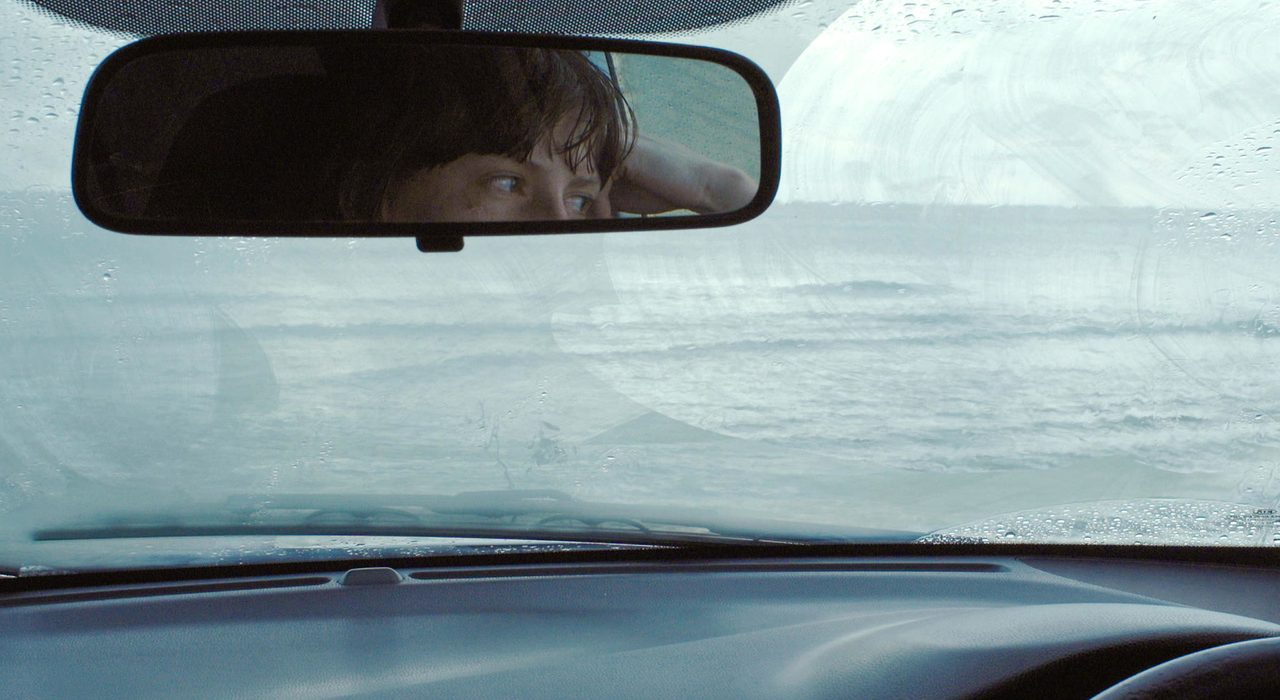Disclaimer: There is nothing academic in this essay. I am just speaking from the heart and intuition. It lacks of research and citing from widely accepted authors, theorists and thinkers.
It’s always been a frightening question for me: Which films would make their way into your best-of list? I’ve often wondered why some of my peers—film enthusiasts and filmmakers—tend to name films from the ’30s or ’40s as their all-time favourites. Why don’t I?
One reason might be that their tutors at university emphasised these films and directors as essential to cinema history. Or perhaps because the most respected filmmakers of our time cite them as influences.
But I’ve always wondered: what do my peers really feel when they watch a film from the ’30s, ’40s? Is cinema something objective—where people from different backgrounds, ages, and social classes can agree on a “greatest” film? Are there patterns or technical standards that define greatness?
As for me, I would probably name Wings of Desire by Wim Wenders as one of my favourite films of all time. And the list would likely include Stranger Than Paradise and Permanent Vacation by Jim Jarmusch, and News from Home by Chantal Akerman. If asked what kind of films I want to make, I’d say Perfect Days by Wim Wenders, Paterson by Jim Jarmusch, Drift by Helena Wittmann and Fremont by Carolina Cavalli—films from living directors, some of whom are not (yet) considered legends. I know it’s almost taboo to include filmmakers who are still alive or not “canonised” yet. There’s the risk of being seen as shallow or ignorant of film history. But I think there’s a valid logic behind my choice, and I claim it holds water.
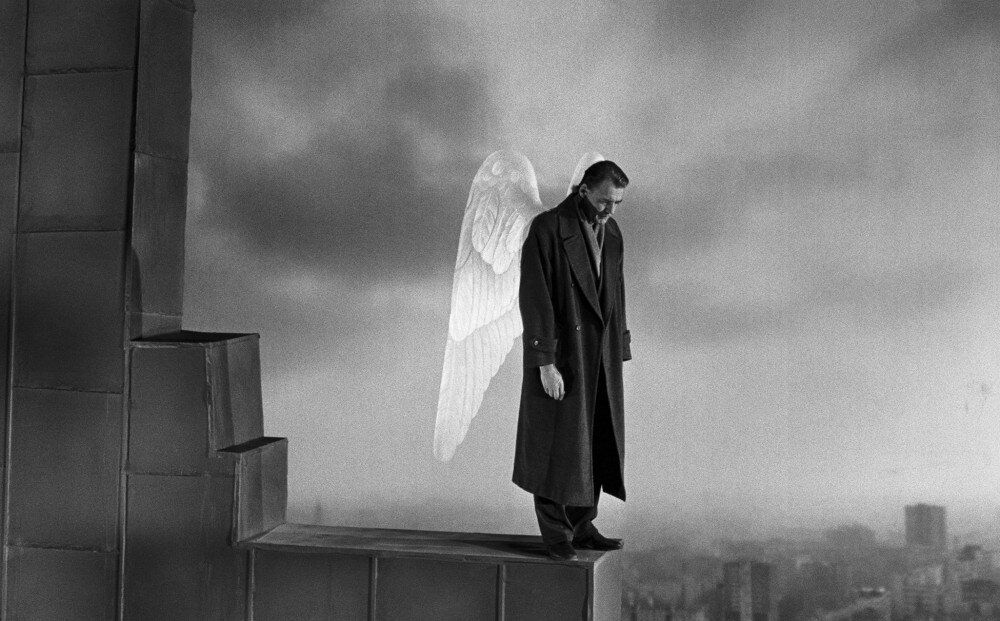
Image: Wings Of Desire by Wim Wenders
Let’s start with the first set of films:
- Wings of Desire (1987)
- Stranger Than Paradise (1984)
- Permanent Vacation (1980)
- News from Home (1977)
All of them were made in the late ’70s or ’80s. These films were made either just before or just after I was born (1984). What’s the connection between their production years and my birth year?
Before guessing, it’s worth noting they all center around characters who drift—characters trying to find meaning or simply wandering. They’re drifters, idlers, flâneurs. Their cinematic worlds are minimalist, even distant and cold. These films show feelings and subjectivity to a certain extent, but there’s often a lack of harmony between the characters and their environments. They seem to float.
So why am I drawn to these kinds of films? Is it because I, too, am searching for meaning? Or simply because they were made close to the time I was born? Maybe partly, but not only. I believe it goes deeper.
These films are products of historical shifts. The Great Depression (1929–1939), and the Second World War (1939–1945) probably gave rise to the directors I admire. Wenders was born in 1945, Akerman in 1950, Jarmusch in 1953. Their worlds—shaped by trauma, migration, urbanisation—produced a generation questioning inherited meanings. The old answers no longer worked. They had to invent new ones. This could even be linked to postmodernism, where meanings began to shift, dissolve, or contradict themselves—where even meaning itself lost its meaning, if you know what I mean.
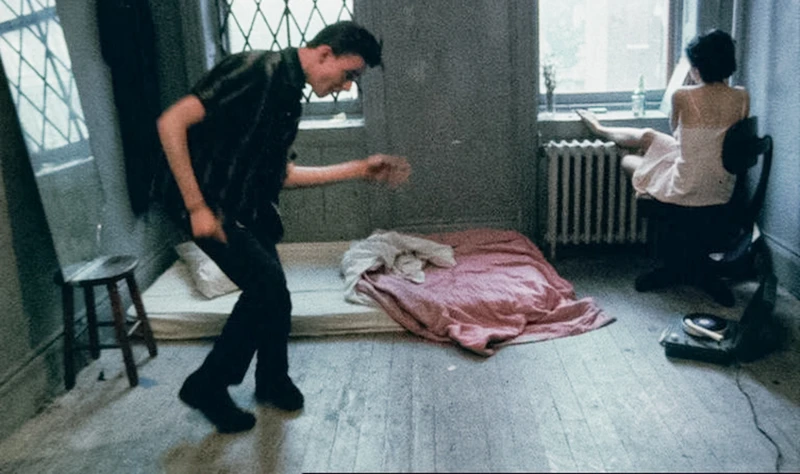
Image: Permanent Vacation by Jim Jarmusch
Jarmusch’s early characters, especially in Permanent Vacation, are also adrift. They don’t belong. The city is filmed as cold and detached, much like Akerman’s vision in News From Home. His characters cling to art—music, poetry—not as solutions, but as survival. I couldn’t help but feel that this wasn’t just how his characters survived—but how Jarmusch himself made sense of the world.
Chantal Akerman tragically couldn’t survive. In News from Home, her mother’s letters are read over long, uninterpreted shots of alienating city spaces. It feels as though Chantal was seeing the world through her mother’s hopes and concerns for her—hopes she couldn’t fully share. She didn’t seem to have a personal blueprint for life, only a profound love for her mother and a survival struggle with the help of cinema. So, in a way, she let her mother interpret the world for her—because she couldn’t or didn’t want to do it herself. In her memoir My Mother Laughs (a book I highly recommend), she confesses that she stayed alive mostly for her mother’s sake. A year after her mother passed, Chantal took her own life.
Perhaps the clearest depiction of this search for meaning is in Wings of Desire by Wim Wenders: a fallen angel who abandons the divine to feel something—touch, love, warmth. He leaves behind a cold omniscience for the simplicity of being human. This also reflects a broader shift—from believing that life holds some inherent divine meaning, to realising that you’re actually on your own and must find your own meaning. In other words, a move from modernism to postmodernism.
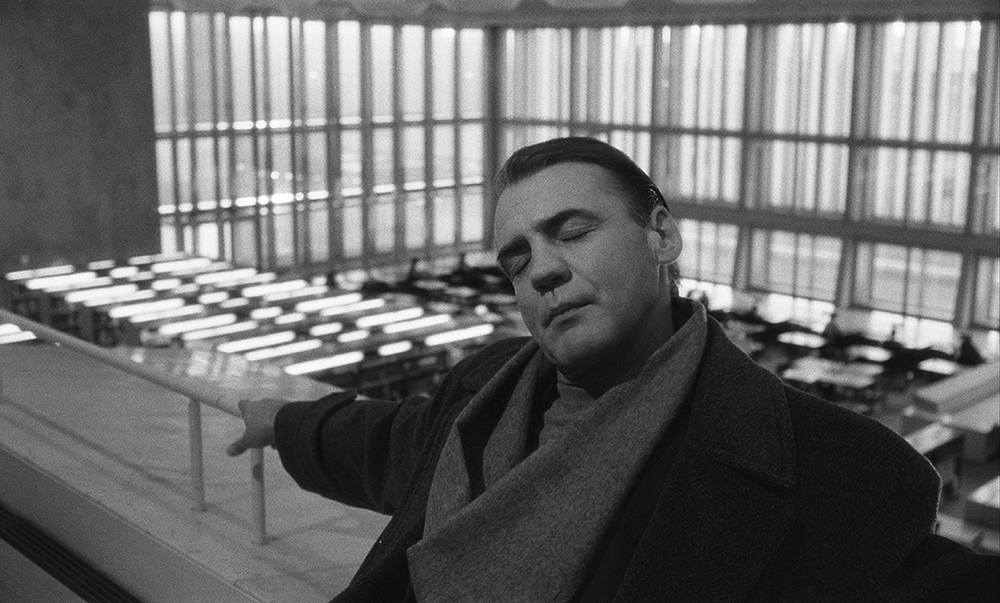
Image: Wings Of Desire by Wim Wenders
A gentle reminder at this point: I’m not speaking from thorough academic research, as I confessed at the beginning—just from intuition, curiosity, and the confidence of not knowing.
All these characters live in alienating worlds. Some search for another world to feel at home in. Some stop searching altogether.
These films were made around the time I was born. It’s no surprise that I, too, am a product of that historical shift. But unlike those directors, I wasn’t even aware of why I felt alienated. Maybe they weren’t either—who knows. But somehow, they managed to diagnose the illness; I was simply born into its symptoms. That’s why these films speak to me more than other great films from the ’30s or ’40s. They create space for my feelings. They make my world feel valid. They remind me I’m not alone in my disconnection.
That’s why Bicycle Thieves, for example—a film so many peers admire—doesn’t hit me the same way. I’ve often wondered how those films speak to others, how they make them feel seen. I’m not just talking about themes. I’m talking about aesthetics, rhythm, sound, dialogues and silence when it’s needed.
As I said before, I don’t believe films can be ranked objectively. For me, a film’s value lies not only in its craft or historical importance, but in how it makes us feel. So it should be completely normal that I include Wenders’ film in my list, while he might include films from the 1930s in his. In fact, I think it would be strange if we had the same list at all.
Just to summarise this bit: if a film doesn’t speak to me as a companion in shared struggle, it won’t make my list—which, I hope, is still allowed by the cinema police.
Let’s move to the second set of films:
- Perfect Days – Wim Wenders
- Paterson – Jim Jarmusch
- Drift – Helena Wittmann
- Fremont – Carolina Cavalli
I’ll mention about these films in two subcategories.
Category 1: films by directors whose earlier works deeply resonated with me—Wenders and Jarmusch.
These later films—Paterson and Perfect Days—feel like sequels to me. As if the drifting characters have found peace. They’ve embraced the simplicity of life.

Image: Perfect Days by Wim Wenders

Image: Paterson by Jim Jarmusch
In Paterson, a bus driver wakes up at the same time every day to go to work. He drinks a pint after dinner at the same bar he always goes to, where he knows the other regulars. He walks his dog, kisses his lover in the morning, chats with a child about life, and writes poems during his breaks. He finds beauty in small things. He’s accepted the absence of a grand meaning and quietly created his own. I see him as the evolved form of the character from Permanent Vacation.
In Perfect Days, Wenders presents a toilet cleaner from a wealthy background who has chosen a life of simplicity. He takes photos of trees, buys one book at a time, enjoys music with new acquaintances, bonds with his nephew, and approaches his job as if it were the most important job in the world. As Lou Reed’s lyrics go, “Oh, it’s such a perfect day, I’m glad I spent it with you…”, this character, too, finds joy in the smallest moments—through his work, his brief encounters, his connection to books and plants.
He might be the angel from Wings of Desire—now fully human, finding meaning in simplicity rather than chasing something divine.
When the grand narratives fail, these tiny rituals become the meaning of life. We build meaning from the ground up—through work, art, conversation, generosity. I hear echoes of Viktor Frankl’s logotherapy and the Japanese philosophy of ikigai in these films, both of which celebrate the creative ties that bind us. And when I say creative, I don’t just mean making art. I also mean the kind of creative connection we see in Perfect Days—like when Wenders’ character talks with the man who has terminal cancer and, instead of offering abstract comfort, plays a simple game with him to figure out the answer to his question about shadows. Or when the restaurant owner serves her customers with love, care, and respect. It’s not about producing something—it’s about a moment of real presence, care, and shared understanding. (A reading recommendation at this point: On Connection by Kae Tempest.)
What might Akerman’s equivalent film to Paterson or Perfect Days have been like?
I sometimes try to imagine what Akerman’s equivalent of Perfect Days or Paterson might have been, if she had lived. The thought breaks my heart, though.
After seeing these two new films by Wenders and Jarmusch, I find myself longing to see an evolved version of her character—of herself—in News from Home. I wish she were still here, still making films, still writing, still finding some way to live. Her last film, No Home Movie, on the contrary, feels almost like a confession that she couldn’t find that peace. And when considered alongside her memoir My Mother Laughs, it reads almost like a goodbye letter.
In other stories, I see a potential version of the characters—one that might have ended like hers. A version that could have died too, but didn’t. A version that might have been, if they hadn’t somehow found a way to keep going.
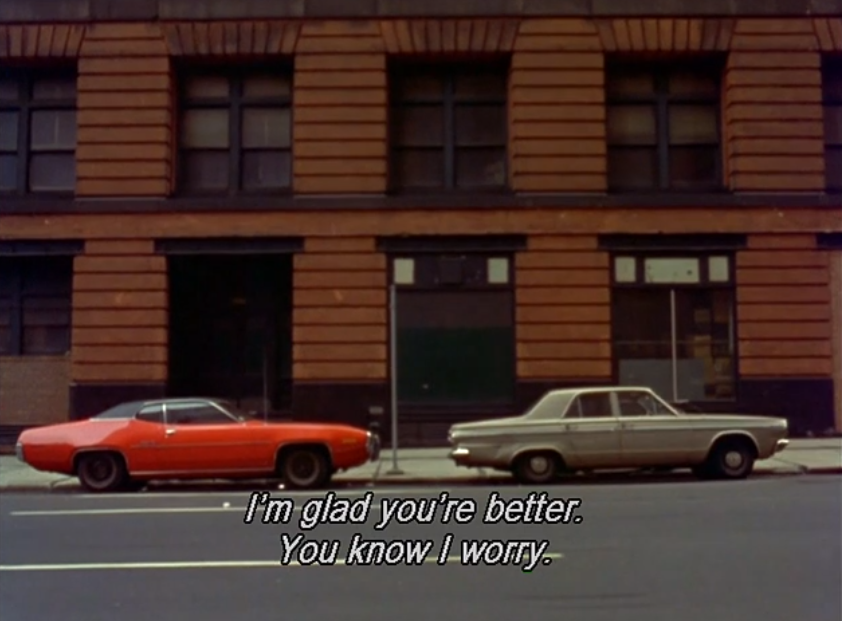
Image: News From Home by Chantal Akerman
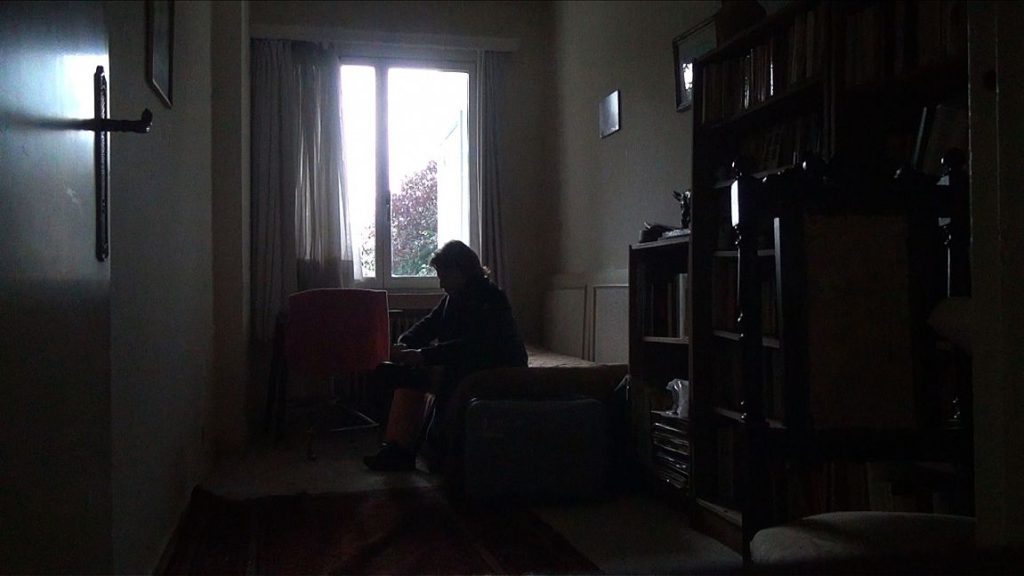
Image: No Home Movie by Chantal Akerman
Category 2: the kind of films I’d like to make.
- Drift – Helena Wittmann
- Fremont – Carolina Cavalli
These films speak to today’s world: immigration, displacement, a new kind of alienation—born not only from war, but from global shifts in labor, identity, belonging, and economic instability. We’re scattered across the world, and now more of us are immigrants than expats. Sometimes, even within our own countries, internal migration turns us into strangers in once-familiar places.
People no longer travel to gain experience to bring back home; now they leave because there’s no future at home.

Image: Fremont by Carolina Cavalli
In Fremont, we see this new struggle—starting over, speaking a new language, working jobs others would reject. And this will only become more common. Migration will continue to rise, driven by war, climate crisis, mass production that depletes the earth’s resources, shifting economies, changing modes of labor, and the rise of artificial intelligence. We’re still living through it, which is why we can’t fully see its meaning yet. But one day, the films and books from this period will help reveal what we couldn’t yet articulate.
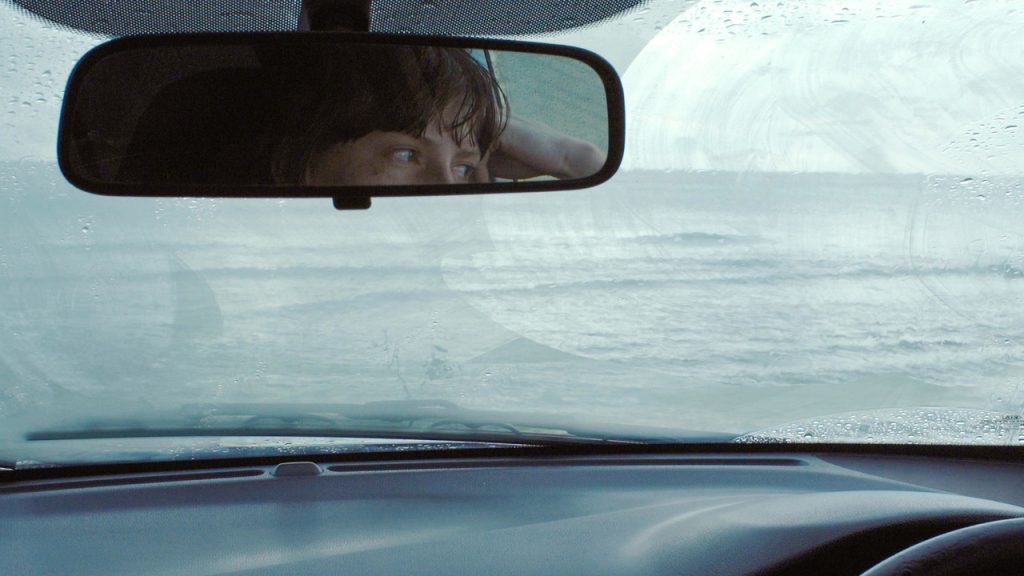
Image: Drift by Helena Wittmann
In Drift, it’s not just geography that shifts, but emotions. Constant movement—biking, sailing, driving. Togetherness, if it comes at all, is fleeting. Life feels like a long process of isolation. To understand it, we need to simplify and ask questions.
What drives us from place to place, from person to person?
The long shots of the ocean between people and places—what are they trying to say to us? What is the ocean telling us?
What’s left to say after all of those films in the history that has been made?
Maybe nothing.
Perhaps it’s time to stop talking and start listening. Let the world speak, not just humans. Films like Drift create space for this: less dialogue, more atmosphere. Meditative images and sounds of waves, traffic, footsteps, bicycles, storms. We must find the courage to be quiet, so the world has a chance to speak for itself through our creations. When I say “world,” I include humans too of course. But I also place them back within the landscape—one part among many.
These are the films I want to make. These are the films I want to watch—the ones I’d include in my list, whether or not they’re considered legends in cinema history. Films that emerge organically from this time and place—the ones that let the world speak through them.
Not that anyone asked me to make a list, though—just saying, in case you were going to.

